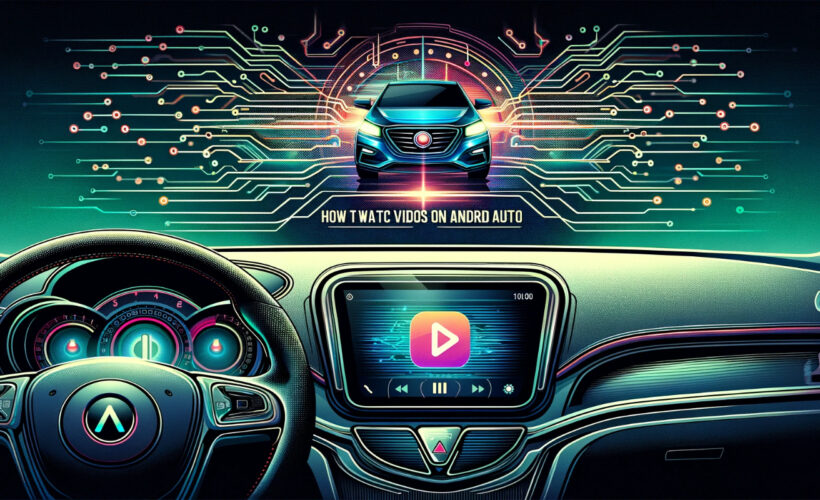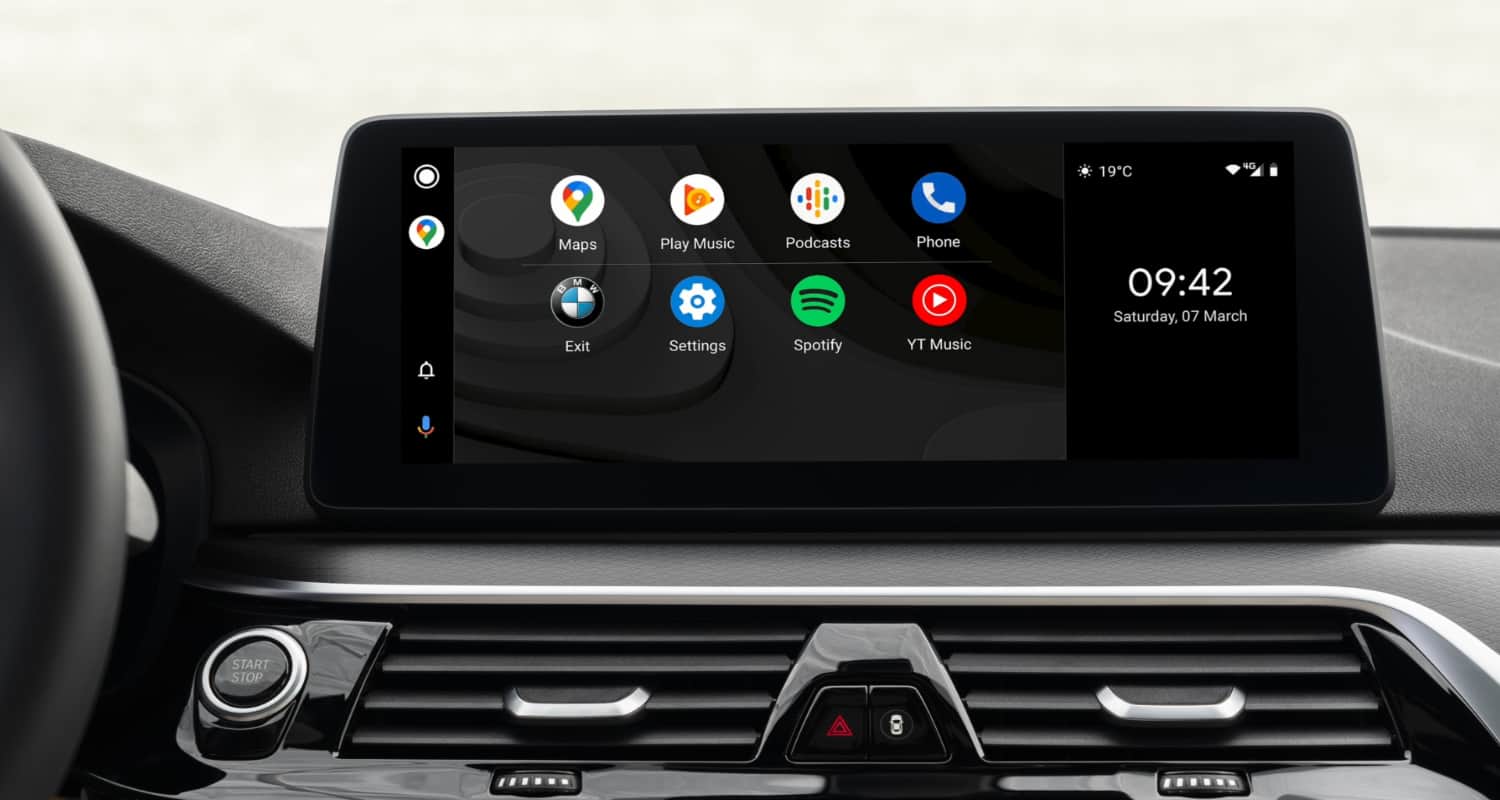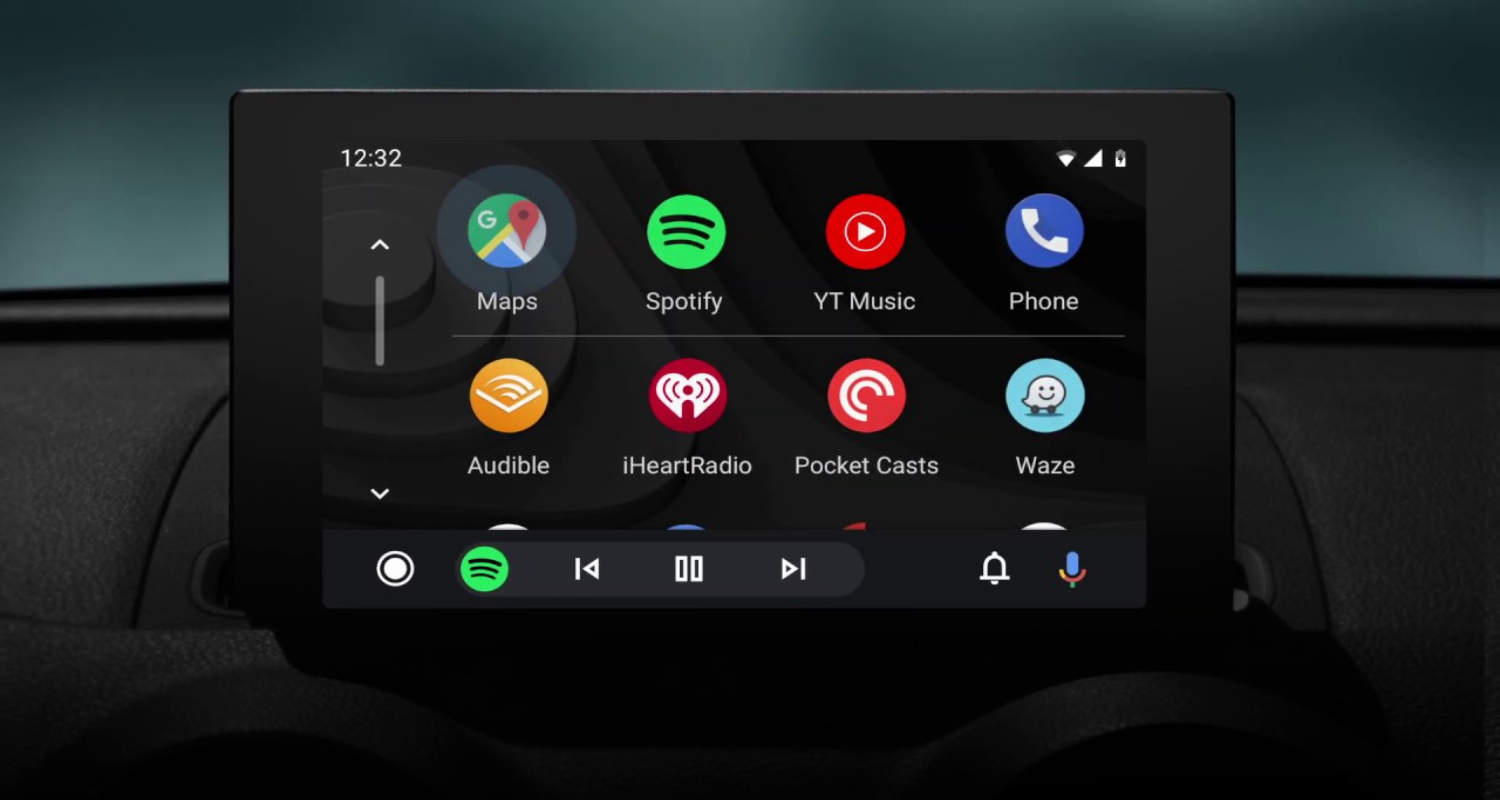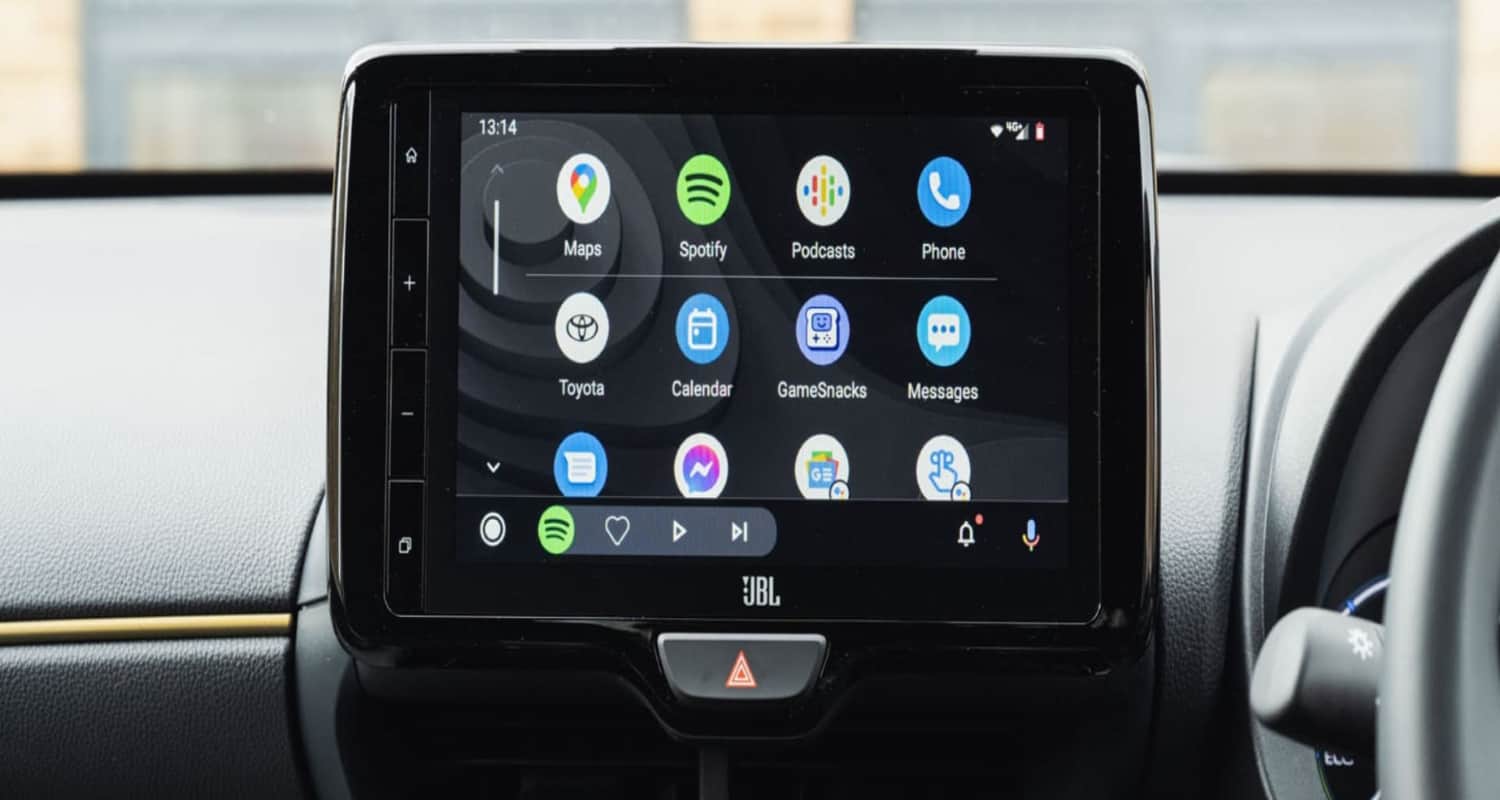
Imagine you’re on a long road trip, the landscape blurring past your windows, and the silence in the car is almost deafening. You think, “Wouldn’t it be great to catch up on my favorite shows right now?” But there’s a catch – you’re using Android Auto, and it’s notoriously strict about video playback while driving. This restriction, rooted in safety concerns, often leaves users frustrated and longing for more entertainment options during those endless hours on the road.
How to watch videos on Android Auto? To watch videos on Android Auto, use third-party apps like Fermata Auto, which bypasses default restrictions. Install the app on your Android device, connect to your car, and access your video library. Remember, prioritize safety and legality when using such apps.
But what if there was a way to safely and legally bypass these limitations? A method to entertain your passengers or enjoy your favorite videos while parked? In this article, we’re diving into the world of Android Auto to uncover the secrets of watching videos – safely and within the bounds of the law. So buckle up, as we explore this much-requested feature and bring a solution to your in-car entertainment woes.
See Also: Where Does GoPro Quik Save Files on Android?
Understanding the Limitations
Why Android Auto Restricts Video Playback
At first glance, it might seem overly cautious or even frustrating that Android Auto limits video playback. But there’s a solid reason behind this. For those asking how to watch video on Android Auto, it’s important to understand that the primary goal of Android Auto is to minimize distractions while driving. It’s designed to keep your eyes on the road and your hands on the wheel. Video playback, especially for the driver, is a significant distraction and can lead to dangerous driving situations. By restricting this feature, Android Auto aligns with its core principle: ensuring driver and passenger safety. For more insights on Android functionalities and tips, check out this guide on how to use emergency mode on Samsung.
Safety Concerns
Let’s dive deeper into the safety aspect. When you’re driving, every second counts. A momentary glance at a video can result in missing critical road signs, failing to notice pedestrians, or not reacting in time to sudden changes in traffic. The statistics are alarming – according to road safety studies, distracted driving is a leading cause of road accidents. Android Auto’s restriction is a proactive measure to reduce such risks.
Legal Considerations
Beyond safety, there’s the legal side of things. Many regions have strict laws against using multimedia devices while driving. These laws are in place to prevent accidents caused by distracted driving. By limiting video playback, Android Auto helps you stay on the right side of the law. After all, no one wants a hefty fine or legal troubles just for watching a video.
In summary, while it might be tempting to have full video playback capabilities on Android Auto, these limitations are there for a very good reason. They prioritize your safety and ensure compliance with the law, keeping everyone on the road a bit safer.
Popular Demand for Video Playback
User Scenarios: Playing Videos for Passengers, Parked Situations, etc.
Despite the safety and legal limitations, there’s a growing demand for video playback on Android Auto. Imagine you’re parked, waiting for a friend, or you have restless kids in the backseat on a long journey. In these scenarios, playing a video could be a real lifesaver. Users often express the desire to entertain passengers, especially children, during long drives. The ability to play educational or entertaining content can transform a tedious journey into an enjoyable experience.
Community Discussions and User Requests
This demand hasn’t gone unnoticed. Online forums and community discussions are abuzz with users seeking ways to enable video playback on Android Auto. From Reddit threads to tech blogs, there’s a constant stream of queries and requests. People are not just asking for this feature; they’re actively looking for workarounds. It’s a clear indication of a gap between user needs and the current capabilities of Android Auto. While safety is paramount, these discussions highlight a desire for flexibility in non-driving scenarios, where watching videos could be safe and beneficial.
Workarounds and Solutions
Overview of Known Methods to Play Videos
While Android Auto itself doesn’t support video playback, tech enthusiasts have found some workarounds. One popular method is using third-party apps like Fermata Auto. 
Step-by-Step Guide on Setting Up Video Playback
If you decide to use an app like Fermata Auto, here’s a quick guide:
- Download and Install: First, download Fermata Auto from a trusted source and install it on your Android device.
- Enable Developer Settings in Android Auto: Go to the Android Auto app on your phone, tap on ‘About’, and then tap repeatedly on the ‘About Android Auto’ section until you unlock developer settings.
- Enable Unknown Sources: In the developer settings, enable ‘Unknown Sources’ to allow the installation of apps not downloaded from the Google Play Store.
- Connect to Your Car: Connect your phone to your car as you normally would with Android Auto.
- Access Fermata Auto: Once connected, Fermata Auto should appear on your Android Auto screen, allowing you to access your video library. For additional Android tips, explore handwriting apps for Android.
Legal and Safety Disclaimers
It’s crucial to remember that using such workarounds comes with responsibilities. Firstly, always prioritize safety. Avoid using these apps while driving, as it can be incredibly dangerous and illegal. Secondly, be aware of the legal implications. Using third-party apps for video playback may violate local laws or terms of service agreements. Always check your local laws and drive responsibly.
In conclusion, while there are methods to play videos on Android Auto, they should be used with caution. Safety should always be your top priority, and staying informed about legal considerations is essential. Remember, these workarounds are not official features and come with their own set of risks.
Alternative Solutions
Using Other Devices for Video Playback in Cars
If you’re hesitant about using workarounds on Android Auto, there are alternative solutions for playing videos in your car. One straightforward method is using portable devices like tablets or dedicated in-car DVD players. Tablets, in particular, offer a versatile and mobile solution. You can preload them with movies or connect them to the internet for streaming services. Mounting them on the back of headrests can provide an excellent viewing experience for passengers, especially on long trips. This method is legal, safe (as long as it doesn’t distract the driver), and doesn’t involve tinkering with your car’s systems. For more information on optimizing your device usage, consider reading about automatic wallpaper changers.
Integration with Other Systems
Some modern cars come equipped with their own infotainment systems that support video playback. These systems are designed to work seamlessly with the vehicle’s controls and often include safety features, like disabling video playback when the car is in motion. If your car doesn’t have such a system, aftermarket options are available. These systems can be installed into your vehicle, providing a built-in solution for video entertainment. They often come with screens that can be installed in the dashboard or the back of headrests, offering a more integrated and aesthetically pleasing solution than portable devices.
In summary, while Android Auto has its limitations, there are several alternative ways to enjoy videos in your car. Whether it’s using portable devices like tablets or integrating a dedicated video playback system into your vehicle, these solutions offer a safer and more legal way to keep your passengers entertained. Remember, the key is to ensure that these solutions do not distract the driver and comply with local laws regarding in-car multimedia use.
Future of Multimedia in Vehicles
Upcoming Features in Android Auto
The landscape of in-car entertainment is constantly evolving, and Android Auto is no exception. For those curious about how to add YouTube music to Android Auto, it’s worth noting that Google is continuously updating Android Auto, focusing on enhancing user experience and safety. While there’s no official announcement yet about enabling video playback, there’s speculation about more advanced multimedia features. These could include improved integration with streaming services or more interactive entertainment options for passengers. The key will be balancing these features with safety, ensuring that driver distraction is minimized.
Industry Trends and Potential Updates
The automotive industry is rapidly embracing digital innovation. We’re seeing a trend towards more sophisticated infotainment systems, often with larger, more interactive displays. These systems are becoming more integrated with our digital lives, offering seamless connectivity with our devices. There’s also a growing emphasis on personalized entertainment experiences for passengers, especially in autonomous or semi-autonomous vehicles. As cars become more self-sufficient in driving, the potential for in-car entertainment expands significantly.
In the near future, we might see vehicles equipped with advanced multimedia systems that allow for safe video playback, possibly controlled by voice commands or even gestures. The integration of augmented reality (AR) for an immersive in-car entertainment experience is another exciting possibility. As technology advances, the line between home, mobile, and in-car entertainment is likely to blur, offering a more connected and enriched multimedia experience on the road.
FAQs
Can I watch YouTube on Android Auto?
No, Android Auto does not support YouTube or any video streaming apps directly due to safety and distraction concerns. It's designed primarily for driving-related tasks.
Is it legal to watch videos on Android Auto?
Watching videos on Android Auto, especially while driving, can be illegal in many regions. It's important to check local laws and prioritize safety to avoid legal issues.
How can I play videos for passengers using Android Auto?
To play videos for passengers, you can use third-party apps like Fermata Auto, but remember, these are not officially supported by Android Auto and should be used cautiously.
Are there any safe ways to watch videos in a car?
For safe video playback in a car, consider using portable devices like tablets or in-car DVD systems, ensuring they don't distract the driver.
Will Android Auto support video playback in the future?
There's no official statement from Google about introducing video playback on Android Auto. However, future updates might include more advanced multimedia features, considering user demand and safety standards.
Conclusion
In exploring the possibilities of watching videos on Android Auto, we’ve navigated through a landscape marked by strict safety protocols and innovative workarounds. While Android Auto currently sets firm boundaries against video playback while driving, the demand for such features is undeniable. Users seek flexibility, especially in scenarios where safety isn’t compromised, like entertaining passengers or while parked.
The workarounds, like using third-party apps, offer a glimpse into what could be, but they come with their own set of legal and safety caveats. Meanwhile, alternative solutions like using tablets or integrated car systems present safer, more legal options. Looking ahead, the future of in-car multimedia is bright and promising, with potential advancements that could redefine our in-car entertainment experience.
As we conclude, it’s clear that while Android Auto’s current stance on video playback prioritizes safety, the evolving landscape of automotive technology may soon provide us with more options. Until then, it’s crucial to balance our desire for entertainment with the responsibility of safe driving and adherence to legal guidelines.

As the buyer’s guide editor for WantedTech Kris writes previews, reviews and assorted commerce content. Her work has also appeared on Yahoo, Anime Insider, Anime News Network and The Escapist, as well as a lengthy stint writing and editing things for The Pokémon Company. She still plays the games and seriously can’t believe there are almost 900 Pokémon now.





